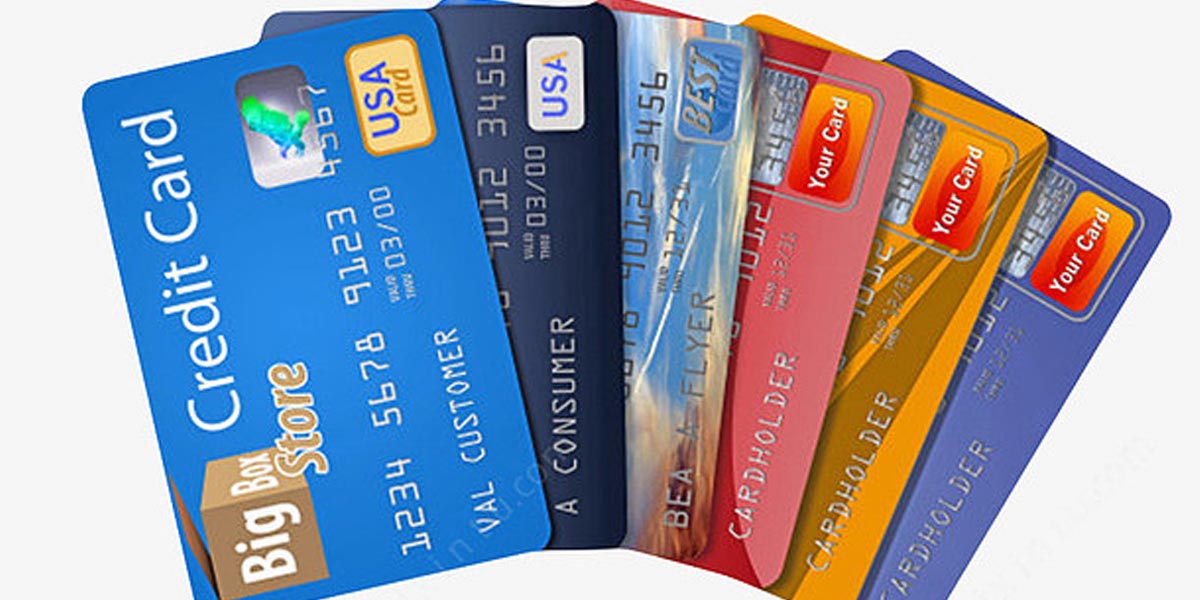In today’s globalized era, international money transfers have become a crucial link connecting businesses, households, and individuals worldwide. Whether it’s cross-border trade, student life abroad, or remote work, people require secure, prompt, and efficient means of international fund transfer. This article will introduce you to several common international money transfer methods, discussing their advantages, disadvantages, and applicability in different scenarios. With the continuous advancement of technology, the financial landscape is evolving, so let’s delve into this promising field together.
- Telegraphic Transfer (TT)
- Telegraphic Transfer (TT) as an international remittance method has distinct advantages and disadvantages. Here are the primary pros and cons:
- SWIFT
- SWIFT, as an international financial communication network, has its advantages and disadvantages. Here are the main pros and cons of SWIFT:
- Western Union
- The following are some key details about Western Union and its pros and cons in the field of international money transfer.
- Credit Card
- Pros and cons of credit card
Telegraphic Transfer (TT)
Telegraphic Transfer (TT), commonly known as wire transfer, is a prevalent method of international remittance. It involves electronically transferring funds from one bank account to another. During a telegraphic transfer, funds do not physically move in the form of cash; instead, they are electronically transferred through the banking system to ensure a secure, swift, and efficient delivery to the target account. When initiating a telegraphic transfer, it is typically necessary to provide detailed recipient information, including the account name, account number, name of the receiving bank, and address. Ensuring the accuracy of this information is crucial for the successful completion of the telegraphic transfer. It is advisable to familiarize oneself with the specific regulations, fees, and processing times of the chosen bank before initiating a telegraphic transfer to better plan and manage international fund transfers.
Telegraphic Transfer (TT) as an international remittance method has distinct advantages and disadvantages. Here are the primary pros and cons:
Advantages:
1. Fast Speed: Compared to traditional remittance methods, telegraphic transfers are generally faster. As they involve electronic funds transfer, transactions can be completed in a short period, sometimes even allowing for immediate crediting.
2. Traceability: Telegraphic transfers have good traceability; funds movement can be tracked through the banking system, enhancing transparency and security in the remittance process.
3. Wide Applicability: Telegraphic transfers are suitable for various remittance needs, including business transactions, personal remittances, and urgent fund transfers. Therefore, it is a flexible international payment tool.
4. Global Coverage: Since telegraphic transfers operate through the banking system, they facilitate global fund transfers, providing extensive coverage.
Disadvantages:
1. Higher Costs: Compared to some other remittance methods, telegraphic transfers often come with higher transaction fees. Additionally, there may be additional charges due to fluctuations in exchange rates.
2. Exchange Rate Risk: Due to fluctuations in the foreign exchange market, telegraphic transfers may be subject to changes in exchange rates, leading to disparities between the actual received amount and the expected amount.
3. Complex Information Requirements: To complete a telegraphic transfer, detailed and accurate recipient information is typically required, including account name, account number, name, and address of the receiving bank. This may add complexity to the process.
4. Possibility of Intermediary Banks: In cross-border telegraphic transfers, funds may need to pass through multiple intermediary banks, potentially resulting in additional processing time and fees.
SWIFT
SWIFT (Society for Worldwide Interbank Financial Telecommunication) is an international financial communication network that provides a secure, standardized, and efficient communication platform for global banks. SWIFT does not directly offer fund transfer services but supports communication between banks and financial institutions through its network. The SWIFT code (SWIFT/BIC code) is a unique code consisting of 8 or 11 alphanumeric characters used to identify banks. This helps ensure the accurate transmission of funds on a global scale. SWIFT defines various message types for different financial transactions. For example, the MT103 message type is commonly used for telegraphic transfers, while MT700 is used for letters of credit.
SWIFT, as an international financial communication network, has its advantages and disadvantages. Here are the main pros and cons of SWIFT:
Advantages:
1. Global Coverage: SWIFT is a global financial communication network connecting the majority of banks and financial institutions worldwide. This extensive coverage ensures a highly interconnected global financial system.
2. Standardization: SWIFT provides standardized communication protocols and message formats, enabling financial information exchange between different countries and banks using the same specifications. This helps reduce misunderstandings and enhances operational consistency.
3. Security: SWIFT is committed to providing a highly secure financial communication platform. Robust encryption technologies and other security measures are employed to ensure the security of sensitive information during transmission.
4. Traceability: SWIFT offers real-time monitoring and tracking services, improving transaction traceability and transparency.
5. Message Diversity: SWIFT supports various types of financial messages covering international trade, payments, settlements, and more.
Disadvantages:
1. Processing Time: SWIFT transactions may require a certain processing time, especially for cross-border transactions. In some cases, funds may need to pass through multiple intermediary banks, resulting in relatively slow transaction speeds.
2. Costs: SWIFT transactions typically come with certain costs, including fees for both sending and receiving parties, as well as potential currency exchange rate differences. Compared to some newer payment systems, SWIFT’s costs may be higher.
3. Dependency: As a traditional financial communication network, SWIFT faces challenges from emerging technologies. With the rise of new payment systems, SWIFT may encounter competition and pressure for reform.
4. Exchange Rate Fluctuations: SWIFT transactions may be affected by fluctuations in exchange rates, potentially leading to discrepancies between the final received amount and expectations.
Western Union
Western Union: Founded in 1851, Western Union is a global payment services company headquartered in Denver, Colorado, USA. It specializes in providing cross-border remittance and currency exchange services. As one of the world’s largest international payment companies, Western Union’s extensive network enables users to transfer funds globally. The company operates through thousands of agent locations worldwide, including banks, post offices, currency exchange offices, and retail stores. Western Union’s services cater to a wide range of users, allowing them to engage in both small and large-scale international remittances. This flexibility makes Western Union particularly popular in emergencies.
The following are some key details about Western Union and its pros and cons in the field of international money transfer.
Advantages:
1. Global Coverage: Western Union Money Transfer has thousands of locations worldwide, allowing users to easily make international transfers. This extensive network makes Western Union a preferred remittance service provider for users in many regions.
2. Instantaneous Transfer: Western Union offers options for instant or within-minute transfers, enabling users to quickly send funds to recipients, especially in urgent situations.
3. Multiple Receipt Options: Recipients can choose to collect cash at Western Union agent locations or have funds directly transferred to their bank accounts. This variety of receipt options enhances convenience.
4. Diversified Payment Methods: Users can pay funds to Western Union through various methods, including cash, credit cards, debit cards, etc. This diversified range of payment methods provides users with more choices.
Disadvantages:
1. High Fees: Western Union’s service fees are relatively high, especially compared to some other international remittance services. Additionally, Western Union’s exchange rates may not be as favorable as some other competitors.
2. Exchange Rate Differences: Similar to other international remittance service providers, Western Union may charge a certain margin on exchange rates, which can impact the final amount received.
3. Transaction Limits: Western Union typically imposes limits on the amount for each transaction, which may inconvenience users making large remittances.
4. Competitive Pressure: With the development of emerging payment technologies and digital currencies, traditional remittance service providers like Western Union face increasing competitive pressure. Users have more choices and may seek cheaper and faster remittance options.
Credit Card
A credit card is a financial tool that allows the cardholder to use funds provided by the issuing bank in the form of a loan within a specified period without the need for immediate payment. Credit cards are typically associated with a credit limit, indicating the maximum amount the cardholder can borrow. Credit cards are widely used in everyday life for shopping, bill payments, travel, online transactions, and more.
The issuing bank sets a credit limit for the cardholder, representing the maximum borrowing amount available. The establishment of the credit limit is usually based on the cardholder’s credit history, income level, and other financial conditions. Cardholders receive a monthly credit card statement detailing transactions and associated charges made during the billing cycle. The statement typically includes information such as the minimum payment due and the full payment deadline.
Some credit cards offer reward programs, such as points, cashback, or coupons. These rewards are often linked to the frequency and amount of card usage. Credit cards typically feature chip technology (EMV) and a magnetic stripe to enhance transaction security. Additionally, cardholders can set a Personal Identification Number (PIN) for added security.
Cardholders need to use credit cards responsibly, avoid exceeding the credit limit, and make timely payments to maintain a good credit record. Simultaneously, judicious use of credit card rewards and benefits can provide cardholders with tangible financial returns and added convenience.
Pros and cons of credit card
Advantages:
1. Convenient Payment: Credit cards provide a convenient payment method, eliminating the need to carry large amounts of cash. Cardholders can easily use credit cards for payments at stores, restaurants, and online shopping.
2. Emergency Expenses: In emergencies, credit cards can provide additional financial support, enabling cardholders to address unforeseen expenses without the need for pre-prepared cash.
3. Building Credit History: Proper use of credit cards and timely repayments contribute to establishing a positive credit history. This is crucial for future endeavors such as applying for loans, renting a home, and other credit-dependent transactions.
4. Reward Programs: Many credit cards offer reward programs, such as cashback, or other perks, allowing cardholders to enjoy additional benefits during their shopping experiences.
5. Security Services: Some credit cards come with certain shopping and travel insurance, providing cardholders with a level of protection.
6. Convenient Bill Management: Credit card statements clearly outline monthly transactions and charges, aiding cardholders in better managing their financial situations.
Disadvantages:
1. High-Interest Charges: If cardholders fail to fully repay the balance by the due date, substantial interest charges may accrue.
2. Risk of Misuse: Cardholders should avoid exceeding the credit limit, as this may result in over-limit fees and a decrease in credit scores.
3. Overdraft Risk: Failure to carefully manage expenses may result in exceeding the credit limit, leading to overdraft. Overdrafts can incur additional fees and result in a decrease in credit scores.
4. Fees and Additional Charges: Credit cards may involve various fees, such as annual fees, overdraft fees, cash advance fees, and international transaction fees.
5. Security Concerns: Despite security features like chip technology and PIN codes, credit cards still carry risks, including card skimming, information leaks, and online fraud.
International money transfers constitute a crucial link in the global economy, and selecting the appropriate method for remittances is paramount for individuals and businesses alike. This article extensively explores several important international remittance methods, including telegraphic transfer (TT), SWIFT, Western Union, and credit cards. Each method has its unique advantages and disadvantages, necessitating a careful consideration of various factors when making a choice. Telegraphic transfer, known for its speed and security, is suitable for various scenarios but comes with higher fees. SWIFT, functioning as a global banking communication network, offers extensive global coverage and standardization but may entail processing time and fees. Western Union, with its global agent network, provides convenient and swift remittance services but comes with relatively higher costs. Credit cards offer a convenient payment method and an opportunity to build a positive credit history, but managing potential high-interest charges and misuse risks requires caution.
When selecting an international money transfer method, individuals and businesses need to consider factors such as transaction amount, exchange rates, speed, fees, and security comprehensively. Additionally, emerging digital payment systems and blockchain technology are gradually gaining prominence, providing more options for international fund transfers. Therefore, choosing the right international money transfer method is crucial based on specific needs and circumstances. Whether prioritizing urgency for swift remittances or focusing on cost-effectiveness for large transactions, making informed choices according to the actual situation ensures the safety, promptness, and cost-effectiveness of fund transfers.





